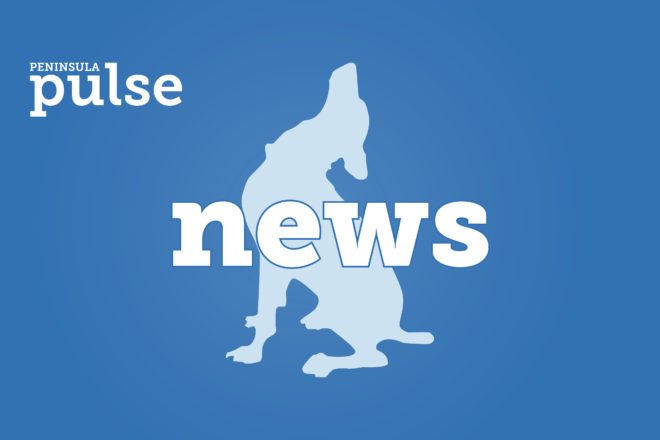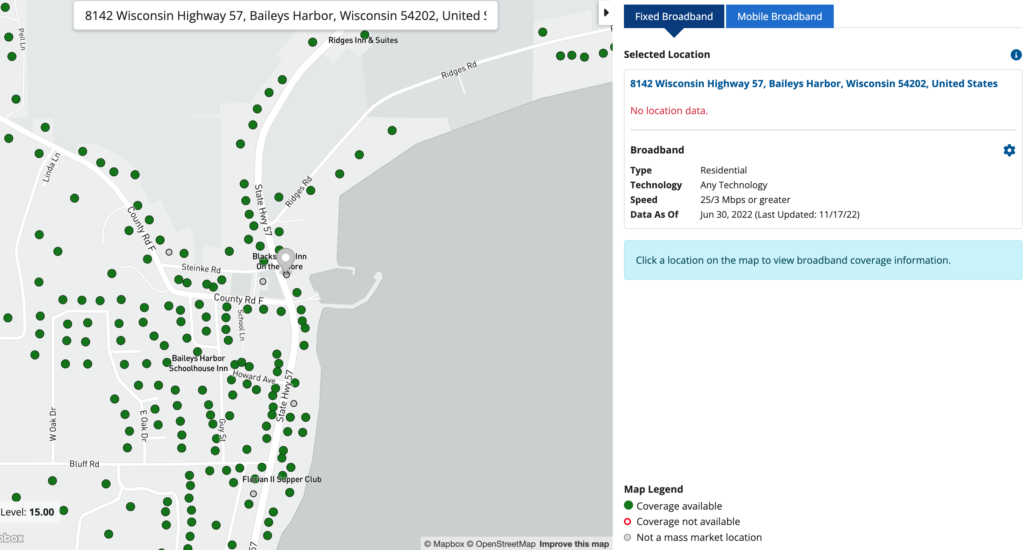Consumers Urged to Find Their Location on New Broadband Maps
- Share
- Tweet
- Pin
- Share

If the data isn’t correct, the map makes it easy to submit a challenge
The Federal Communications Commission (FCC) unveiled the new National Broadband Map that the agency says provides the best picture available to date of where broadband is and is not available across the country.
But that picture comes from information reported by internet service providers (ISPs) in the FCC’s ongoing Broadband Data Collection, and unfortunately, they don’t accurately portray what’s available in Door County or even the state of Wisconsin.
“The map shows Door County as 100% served, with speeds of 25/3 or greater,” said Jessica Hatch, Door County broadband coordinator. “We know for a fact that is incorrect, and our own Door County survey map shows that.”
The FCC currently defines “broadband” internet connection as one that provides at least 25 Mbps (megabits per second) for download speed and 3 Mbps for upload. According to a statement the FCC released with the new map, the previous maps “had relied on information that failed to paint the whole picture of who did and who did not have the internet.”
The FCC’s older maps collected data at the census-block level, meaning that if a single home was served in a census block, the whole block would show up as served on the maps.
“The net result was maps that were overly optimistic, lacked location-specific information, and subsequently glossed over gaps in coverage,” the FCC said.
The new maps have integrated the information from broadband providers with hundreds of location-specific data sources, giving what the FCC says is a far more detailed and accurate picture of fixed broadband availability.
However, even the FCC is referring to this unveiling as a beginning draft that depends on consumers everywhere to look for their address on the map and check its accuracy.

“This crowdsourcing activity is an important part of getting the information we have right,” the FCC said in its statement.
The map allows consumers and other stakeholders to easily dispute or challenge information shown on the map that they believe is inaccurate.
“It’s important for people to look for their address in the fabric map,” Hatch said.
The accuracy of the maps is important because the maps determine how much money states receive for federal grants. This directly affects the grant funding that local municipalities receive to offset the costs to build out fiber to premises in Door County. The more available to states, the more available to local governments applying for those grants.
Bulk challenges from governments are also encouraged. The state of Wisconsin is undertaking one of these – “the new FCC map shows Wisconsin as a whole fully served by 25/3 Mbps or greater,” Hatch said – but she also said that launching a bulk challenge at the county level would require a full-time person working on nothing but that until the first deadline in early January.
“This is a pretty massive challenge for the county or any government,” she said during the Dec. 8 county broadband committee meeting. “This was a consensus after a webinar and talking with other counties. Brown County came to the same conclusion. They are not going to try. Their focus is first to challenge to ensure things aren’t missing from the fabric.”
Even if a government submits a challenge, that doesn’t mean the FCC will accept it.
“They will give the provider an opportunity to rebut, and if that satisfies them [the FCC], that’s it,” Hatch said.
Although the formal challenges are daunting, the maps are set up to easily challenge individual locations. Door County residents and business proprietors are asked to go to the new FCC map at broadbandmap.fcc.gov/home to check their address and submit a location challenge if the address is not found. If it is found, they are asked to check the provider, technology and speeds listed for the address.
The more data collected on what’s available in Door County, the better chances local governments will have to build out broadband infrastructure. That data is being collected by the Public Service Commission through the WISER survey. As of last week, about 2,900 Door County residents and business owners had taken that survey, Hatch said. That’s not even 10% yet, so more responses are definitely needed.
Many local municipalities have sent instructions about taking the survey with tax bills. To take the survey to report internet service quality at your address, go to maps.psc.wi.gov/apps/WISER/index.html.
All Door County residents and business proprietors are asked to go to the new FCC map at broadbandmap.fcc.gov/home to check their address and submit a location challenge if the address is not found. If the location is there, check to be sure the provider, technology and speeds listed for the address are accurate. Funding is tied to internet availability, yet currently, the maps erroneously show that 100% of the peninsula has service. Visit Door County’s broadband webpage at fibernetdoorcounty.org for more resources.
